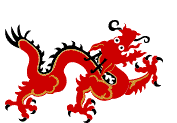During the Vietnam War, the defense of
Air Bases mirrored the conflict itself: There was no rear echelon once
the entire country became a battlefield. Air Bases relatively,
unaffected by ground forces in past wars, were no longer considered safe
havens. They, too, suffered from costly ground assaults and mortar shelling.
Dong Ha, the capital of Quang Tri province, is at the junction of Highway 1 (which runs north-south) and Highway 9 (which runs east- west). The latter provides landlocked neighbor Laos with one of its several trade routes to the sea. The base was only a few miles from the DMZ that separated North and South Vietnam. Dong Ha was a permanent helicopter and major logistics base supporting the northern area of South Viet Nam. It was the location of northernmost aviation unit in Vietnam. Primarily a Marine Corp base, the Air Force had Forward Air Controller assigned and C7a's Caribous flew in & out. A Radar Control Center (Skyspot) supported support of U.S. offensive actions in the DMZ area. The Navy unit at Dong Ha and Cua Viet on the Cua Viet River pushed supplies and ammunition through to the 3d Marine Division on the DMZ and elsewhere in I Corps. A Security Police unit was assigned to the installation. If you have any knowledge of Air Force dogs used at Dong Ha please contact the Webmaster by E-Mail .
At the end of the American cavalry era, the Army disposed of its horses by machine gunning them to death. In our war, the dogs were treated the same way. Only it was done in a more “humane” manner. Some excess dogs were reassigned to other bases in the Pacific but most were killed. The US Military has pledged not to dispose of military working dogs in such a manner again. Please read Death of a Warrior. |

